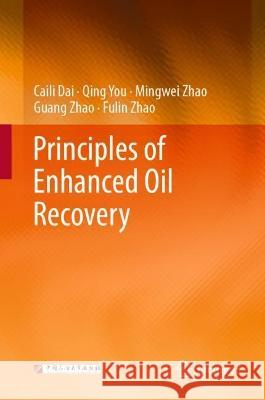Principles of Enhanced Oil Recovery » książka
Principles of Enhanced Oil Recovery
ISBN-13: 9789819901920 / Angielski
Principles of Enhanced Oil Recovery
ISBN-13: 9789819901920 / Angielski
(netto: 766,76 VAT: 5%)
Najniższa cena z 30 dni: 693,97
ok. 22 dni roboczych.
Darmowa dostawa!
This book presents the latest progress in enhanced oil recovery technology and introduces the application of various enhanced oil recovery methods in oilfield development. Enhanced oil recovery (EOR) is a continuous theme in oilfield development. Due to the influence of geological conditions, development mode and physical and chemical factors, more than half of the proven oil reserves remain underground and cannot be accessed. Therefore, many enhanced oil recovery methods have been developed to achieve higher oil recovery. This book presents the basic principles and provides the chemistry knowledge related to enhanced oil recovery. It also expounds the applicable criteria of chemical agents. In addition, combined with field application examples, the limitations of existing enhanced oil recovery methods are analyzed, and the future development direction of enhanced oil recovery technology is highlighted. It is worth noting that the integral profile control and water shutoff technology in this book is widely recognized in the enhanced oil recovery industry and has achieved remarkable economic benefits. Given its scope, this book is useful for the scientific and technical personnel engaged in the study of oil recovery chemistry and enhanced oil recovery and also as a teaching reference for teachers and students majoring in petroleum engineering and oilfield chemistry.
This book presents the latest progress in enhanced oil recovery technology and introduces the application of various enhanced oil recovery methods in oilfield development. Enhanced oil recovery (EOR) is a continuous theme in oilfield development. Due to the influence of geological conditions, development mode and physical and chemical factors, more than half of the proven oil reserves remain underground and cannot be accessed. Therefore, many enhanced oil recovery methods have been developed to achieve higher oil recovery. This book presents the basic principles and provides the chemistry knowledge related to enhanced oil recovery. It also expounds the applicable criteria of chemical agents. In addition, combined with field application examples, the limitations of existing enhanced oil recovery methods are analyzed, and the future development direction of enhanced oil recovery technology is highlighted. It is worth noting that the integral profile control and water shutoff technology in this book is widely recognized in the enhanced oil recovery industry and has achieved remarkable economic benefits. Given its scope, this book is useful for the scientific and technical personnel engaged in the study of oil recovery chemistry and enhanced oil recovery and also as a teaching reference for teachers and students majoring in petroleum engineering and oilfield chemistry.











